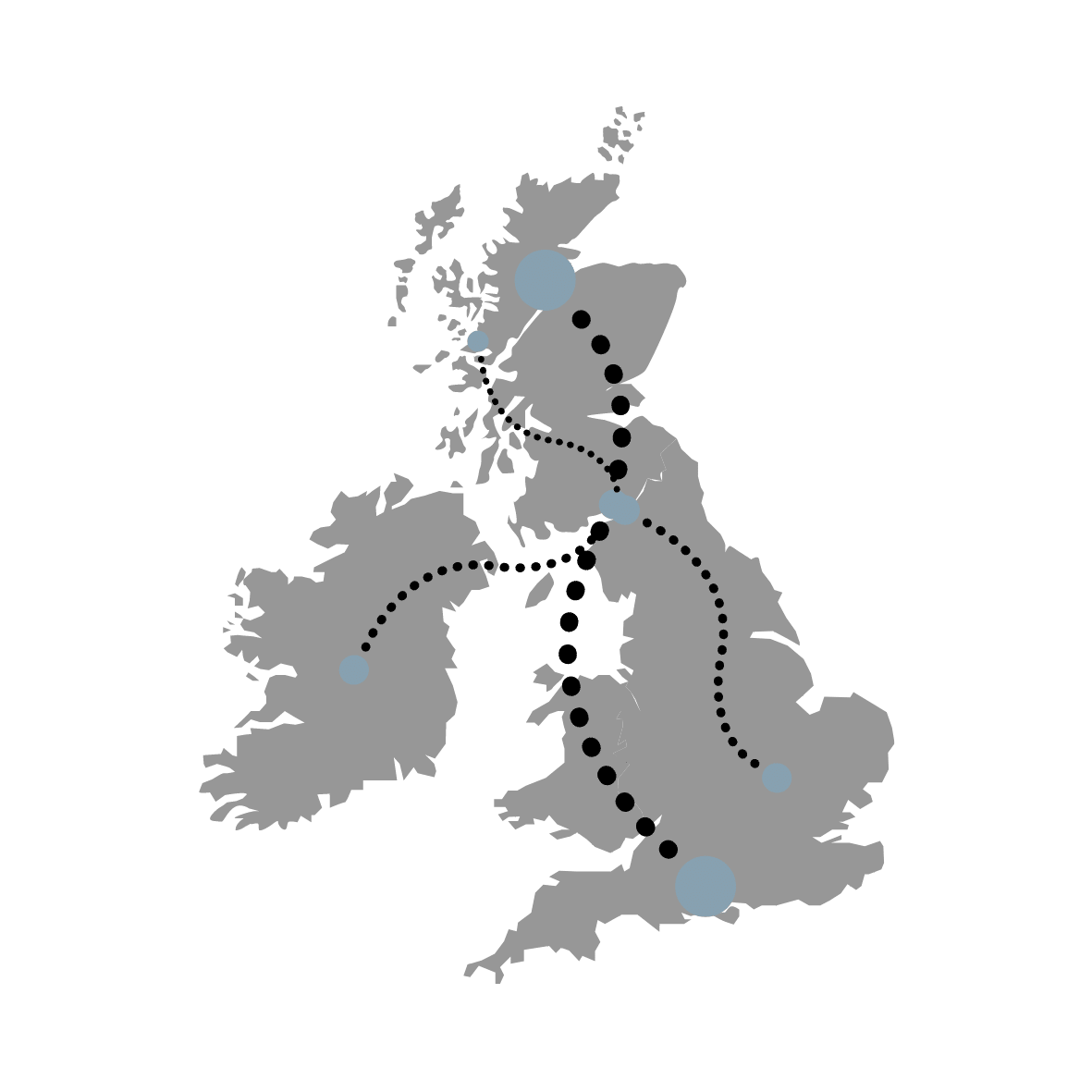Go-To-Market Strategy
Your ‘go-to-market’ strategy is how you sell your products and how you plan your sales. It’s one of the most important things to get right as a business. If you don’t sell the way your customers want, they won’t buy your product! This guide introduces you to the different routes to market. Learn more about how to succeed as a business from our blog here!
- What to consider before you choose your route-to-market
- Direct selling
- Selling wholesale
- Distance selling
- Online selling
- Combination of channels


1) What to Consider Before You Choose Your Route-to-Market
Your route to market needs to be suited to your customers – to how they shop, where they shop and where they’ll see your product. It also needs to match your budget and your ability to distribute your product. If your route requires product delivery, for example, look at how much it’ll cost as well as if you can realistically manage the speed and reliability you want to promise customers – and the logistics.
-
- Consider how and where your customers shop
- Keep in mind your budget and your ability to manage your chosen route
2) Direct Sales
Direct selling is where you sell your product straight to the customer, without someone in the middle – through your own website, door-to-door, using direct marketing or advertising, or through your own shop. It’s good for when you need to explain complex products to consumers. It lets you use your selling skills, build a personal relationship with the customer and get direct feedback. But it requires more staff and higher travel costs. It’s usually more suited to complex products and packages and making personal contact with an important customer for the first time.
- Good for complex products
- Good for making personal contact with an important customer
- More expensive and time-consuming
3) Selling Wholesale
You sell your product to a retailer, wholesaler or reseller, who then sells it to consumers. You usually sell a fairly large amount of product at a lower rate than if you were selling direct. It’s a cost-effective way to shift lots of products in one go, and it doesn’t use up the resources you need approaching customers individually yourself. It’s often more straightforward to manage the business with one wholesaler than lots of individual consumers.
However, profit margins are often reduced, and it can be complicated to set prices and find the right wholesaler. It’s the preferred route to market for selling lower value items, shifting a lot of products quickly, and selling to businesses who prefer to deal with large or established suppliers.
- Good for selling lower value items and shifting a lot quickly
- Lower profit margins and some complications
4) Distance Sales
This is where you sell to customers remotely – usually through a website, telesales, or direct mail such as catalogues and brochures. It’s much cheaper than renting retail space and you don’t have to travel to customers, saving time and money. Cons are that you can’t properly demonstrate your product – some people prefer to feel and try out a product before they purchase – and trust can be more difficult to establish online. It’s a good selling method for repeat orders, reaching internet markets, and selling to customers who are further away or abroad, or for products and services that don’t need to be touched and tried out to be trusted.
- Much cheaper than most other routes
- But harder to build trust in product and business
- Good for repeat orders and products that don’t need a demonstration


5) Online Sales
There are different ways to sell your product online – such as through your own website, by using affiliate marketing, through an auction site such as eBay, through a retailer’s website, through online adverts or using direct emailing to a customer database. Selling online saves on costs – no shop premises or staff needed and orders can be placed automatically. It also means that your business can be open 24/7, that it may reach a wider customer base, and that you can collect data from people placing orders.
However, the internet is often seen as less personal and less trustworthy, you can’t demonstrate the product, and it can be difficult to get traffic to come to your site. To make the most of online, you need a really reliable and easy-to-use website.
- Saves on costs and keeps business open 24/7
- May reach a wider audience
- Difficulties establishing trust and drawing in traffic
- Get a reliable and straight-forward website
6) Combining Channels
This does exactly what it says on the tin – you use more than one route to market. This can give you a greater chance of reaching your audience and you can work out which channel is most effective and adjust your sales strategy accordingly. Be aware though, that you need to keep on top of each channel – prices must be kept consistent if there’s a chance someone’s going to see more than one channel. You also need to make sure you don’t step on any of your agents’ toes by using another channel on top of theirs.
- Can give a greater chance of reaching an audience
- Helps develop a sales strategy
- Difficulties managing multiple channels

About Cleartone
Cleartone is the provider of choice for thousands of new and small businesses that want to work smarter. Cleartone provides new formations and SME´s with clever telecoms; helping owners and staff better control and manage their time, communications, and work/life balance. Get Business calls on your mobile, record them, transfer, screen them, live a better business owner’s lifestyle! Get in contact today.
